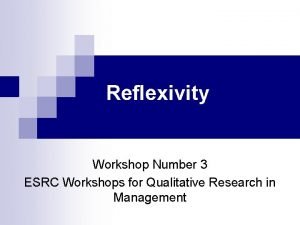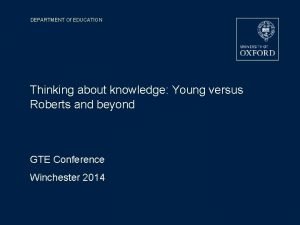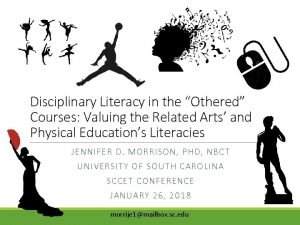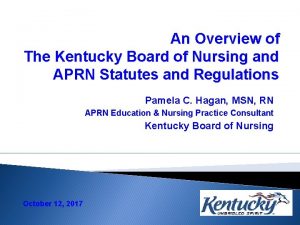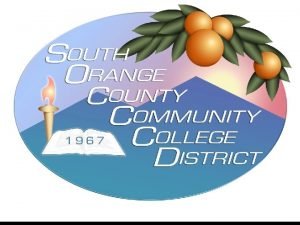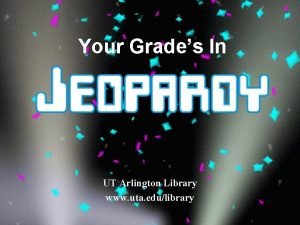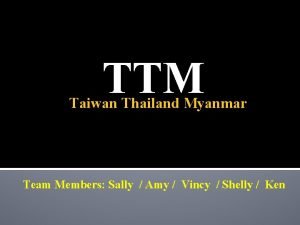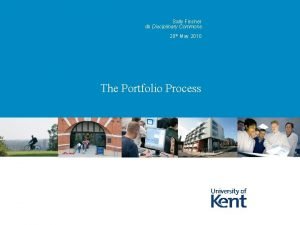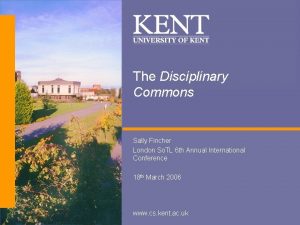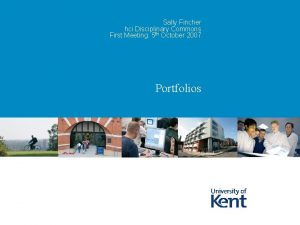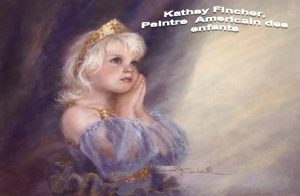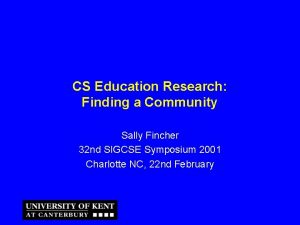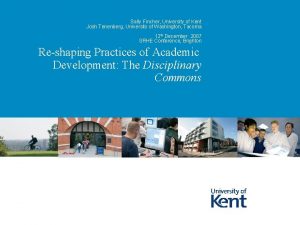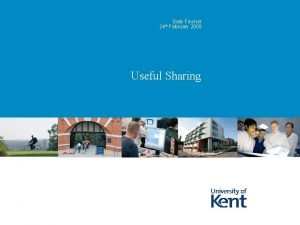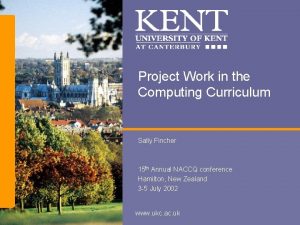The Portfolio Process Sally Fincher Disciplinary Commons 12










- Slides: 10

The Portfolio Process Sally Fincher Disciplinary Commons 12 th May 2006 www. cs. kent. ac. uk

The Portfolio Development Process • Collection - save artefacts that represent the day-today practices - and results - of teaching and learning • Selection - review and evaluate the artefacts saved, and identify those that demonstrate achievement of specific standards or goals. • Reflection - reflect on the significance of the artefacts chosen for the portfolio in relationship to specific goals. • Projection (or Direction) - compare the reflections to goals and set goals for the future. • Presentation - share the portfolio with peers and receive feedback. 2

Collection • You have to have stuff • Some people have a lot of stuff (Pete, Linda) • Some have little (Dermot, Phil) 3

Selection • Once you have stuff, you have to choose the right bits of stuff • “review and evaluate the artefacts saved, and identify those that demonstrate achievement of specific standards or goals” • Evidence of selection? (Dimitar) 4

Reflection Here are three simple questions to ask which clarify the reflective process: 1. "What? " 2. “So what? “ 3. "Now what? " (Monika) 5

Projection • Linking this record through to future practice • Perhaps the natural home of the “I’ll do it differently next time …” section? (Chris, Jim) 6

Presentation • • As we speak, much variety One document? (Mark, David) One medium? (Michael is our outlier) "Hypertext allows for deeper understanding and explanation through links that go from summary statements to complete documents, related items, and reflections. In addition to displaying artefacts efficiently, links can allow the collection of material … to become broader and more thoughtful. " (pp. 23 -24) • Linking reflections to artefacts makes thinking process more explicit. The ability to create links from multiple perspectives (and multiple goals) also overcomes the linearity of two-dimensional paper portfolios • Our hypertext adopters: Tony, Stephan 7

Presentation • Gallery of Teaching and Learning “Compressing and Crystallizing Knowledge: Representing the Complexity of Teaching Succinctly” • Needs for Models and Genres • Refining the Unit of Analysis • Framing the Questions • Balancing Scope and Granularity • Use of Digital Video • Building Context • Documenting Progress 8

Presentation issues • Another collection of Commons portfolios? • House style? • KEEP Toolkit (as an example – there is much other software) • Sense of Place? (Pete, Monika) 9

References • The “Portfolio Development Process” (from slide one) was devised by Dr Helen Barrett. The book chapter which explicates it is in this month’s Train Reading, and more of her material is available from http: //www. electronicportfolios. org This work is licensed under a Creative Commons Licence 10
